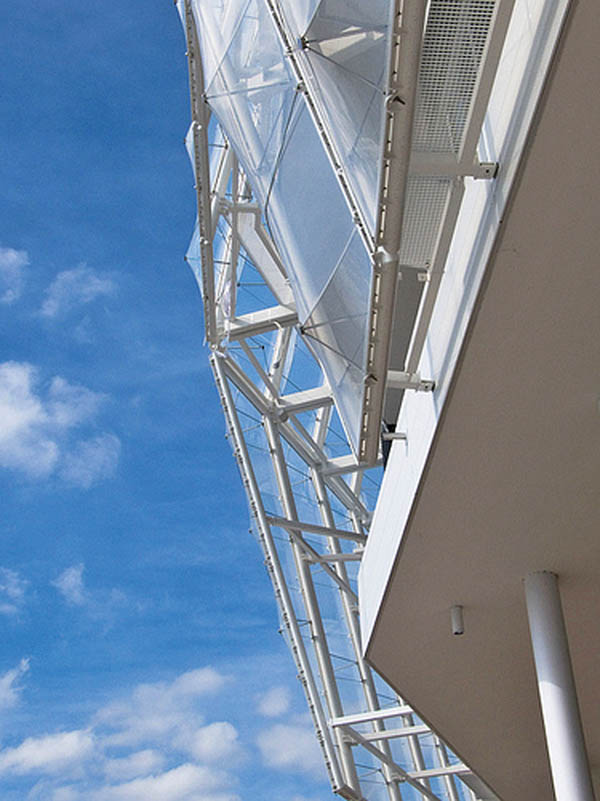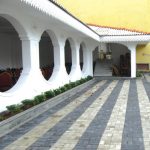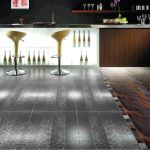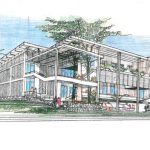-
A Material Ahead Of Its Time
July 2011
Discovered almost by accident, glass has played a major part in our lives as the transparent divider of spaces. Since its inception it has become one of the most used and revered materials in the building industry. In the early days glass was manufactured for the purpose of bringing light through the window openings while keeping the other elements at bay. With modern technology and as the properties of glass is further being heightened glass is used in almost all forms of construction such as revolving doors, skywalks and interior partitions and is one of our most striking architectural materials with a fascinating history.
Its place in the field of construction however is being challenged by new materials entering the market. One such material with promising potential is the Ethylene Tetra Fluoro Ethylene (ETFE) membrane which is fast becoming one of the most exciting materials in today’s design industry and has set the construction world alight with the potential it has to offer. Initially invented by Dupont as an insulation material ETFE was not considered as a material to enter into the mainstream of building materials; it was simply an advancement of the everyday polythene sheet commonly used in green house construction, however its extraordinary properties such as tear resistance long life and transparency to ultra violet light has set this material in the lime light for future developments.
This membrane was tested as a new sail material but was dismissed for this original purpose but its strength and high light transmission and structural properties were seen as advantages for the construction industry. The awareness of this material and its properties are making its way into the consciousness of architects worldwide when it shot to fame most recently with its appearance as the major building material in the Eden project in the UK and with the Beijing Olympic Aquatics centre (watercube). Today ETFE is being specified for an increasing number of projects with various functions such as schools and offices, government buildings, and sports facilities. The spotlight is now on this material and its success is such that it intends to shine.
ETFE weighs approximately 1% of the weight of glass, the ETFE cushions and membranes permit a reduction of the size of the structural frame work it rests on and this in turn inflicts a significantly less dead load on the supporting structure deducting from the overall dead load of the entire building. The reductions in the supporting structural sections provide a major cost benefit increasing its attractiveness within the eyes of the client. Its low weight also is a key advantage when replacing glazing of old structures during renovations and has become extremely popular in transformation of old to new.
Being lighter is not the only advantage the ETFE membrane has over glass. The membrane creates a new benchmark for other materials when it comes to translucency transmitting up to 95% of light without the solar heat gain. When high levels of light transmissions are not required ETFE can be printed or fritted with an array of patterns. The translucent cushions can be lit internally with LED lighting to make them glow or to be projected onto portraying a massive display screen making a trendy material creating dramatic results for most commercial buildings.
Fritting provides good solar control; modern technology now allows project designers to go one step further. Designers are given the option of installing a one layer or a multi layer cladding. While the single layer takes the place of the everyday glass cladding the multilayer takes another step to allow printing to be done in one or two of the inner layers which are programmed to rise and fall with air pressure, to increase and decrease the percentage of printed area; thereby manipulating the solar gain and shading variations.
The use of this material as a clear cladding and the printed material as a translucent membrane can be manipulated throughout a given structure to vary the light intensities throughout the building. Its flexibility is such that it can be stretched over limitless frameworks. This flexibility in design has made ETFE a dream material among designers.
As designers become more conscious of sustainability ETFE provides a viable solution in the eco friendly front as well. It is 100% recyclable, call for minimal energy during transportation and installation, making a significant contribution towards green construction to further justify its existence as first class material.
It is 100% recyclable, call for minimal energy during transportation and installation, making a significant contribution towards green construction to further justify its existence as first class material.
To further strengthen the argument of being a superior material, ETFE is unaffected by UV light, atmospheric pollution and other forms of environmental weathering. These factors make the membrane an extremely durable material. While no ETFE structure has been in place for longer than twenty five years, extensive laboratory and field research has suggested that the material has a life span in excess of 40 years.
References: Architen Landrell, architen.com/technical/article
ETFE: The new roof fabric Case Study I single ply ETFE Radclyffe School Case Study 2 NW bus station




























